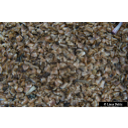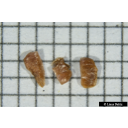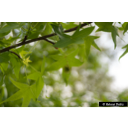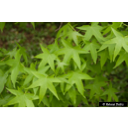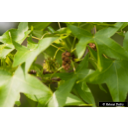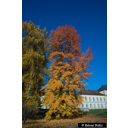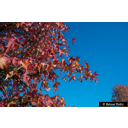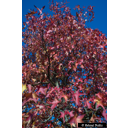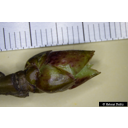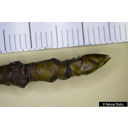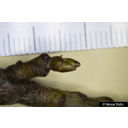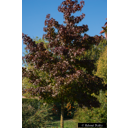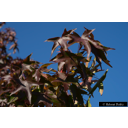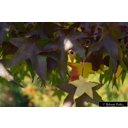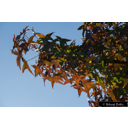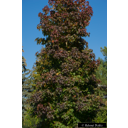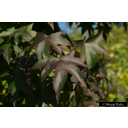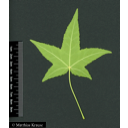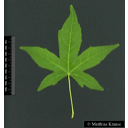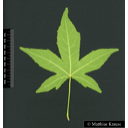Useful information about the taxon (species, subspecies, variety...)
Liquidambar styraciflua L. 1753
Altingiaceae
(APG IV)American sweetgum, American storax, redgum
Taxon concept: The Plant List (2014), version 1.1
Distribution: USA: northeast, northeast-central, southern States of the Great Plains, southeast incl. Florida; Mexico, Guatemala
Liquidambar styraciflua L. - Accepted: Liquidambar styraciflua L. bei Zander 2008; Familie: Hamamelidaceae (Zander 2008)Liquidambar styraciflua L. - Accepted: Liquidambar styraciflua L. bei The Plant List (2010); Familie: Altingiaceae (APG III)Liquidambar styraciflua L. - Accepted: Liquidambar styraciflua L. bei The Plant List (2014), version 1.1; Familie: Altingiaceae (APG III)Liquidambar styraciflua L. - Accepted: Liquidambar styraciflua L. bei World Flora Online - APG IV (Angiosperms); Familie: Altingiaceae (World Flora Online - APG IV (Angiosperms))
- Flowers
- monoecious
- Life form
- tree
- Leaves
- long-petiolate, palmately lobed, with serrate (saw-toothed) margin
- Foliage persistence
- deciduous
- Fruits
- ball-shaped capsule fruit
- Fruit ecology
- wind-dispersed (anemochorous)
- Soil conditions
- preferentially on moist, alluvial clay and loamy soils
- Natural occurrence (habitat)
- river bottoms and alluvial forests
- Vegetation typ and synecology (plant community)
- mixed mesophytic forests; in communities with oaks, maples and hickories
- Constraints according radiation (light)
- shade intolerant
- Usage
- wood is used for making furniture, crates, baskets, interior trim, millwork, railway ties, excelsior, and pulpwood; also used for fuel
- Bark
- brown bark, deeply furrowed with narrow scaly plates or ridges
Erhardt, W., Götz, E., Bödeker, N. & Seybold, S. (2008): Der große Zander. Enzyklopädie der Pflanzennamen. Band 2. Arten und Sorten. Eugen Ulmer KG, Stuttgart (Hohenheim), 18. Aufl., 2103 S.; Pritsch, Günter et al. (2007): 200 Trachtpflanzen erkennen und bewerten.. Kosmos, Stuttgart; The International Plant Names Index (2009). Published on the Internet http://www.ipni.org; Courtesy to IPNI, 2009. Exported from IPNI at date: 2009-09-22 20:17:51;
Diese Webseite verwendet Google Maps, um Karten und Standorte von Pflanzen in den Hohenheimer Gärten anzuzeigen. Dadurch werden unter Umständen Daten an Google weitergeleitet, was mit einer Verarbeitung Ihrer personenbezogenen Daten verbunden sein kann. Die Datenschutzerklärung von Google finden Sie hier: Datenschutzerklärung von Google
| Sex | Standort | Accession number | Planting year | Donation | IPEN | Lat. | Long. |
|---|---|---|---|---|---|---|---|
| Klimabäume Hohenheim West | KLB-361-20498 | XX-0-HOH-KLB-361-20498 | 0 | 0 | |||
| Klimabäume Hohenheim West | KLB-362-20498 | XX-0-HOH-KLB-362-20498 | 0 | 0 | |||
| Klimabäume Hohenheim West | KLB-363-20498 | XX-0-HOH-KLB-363-20498 | 0 | 0 | |||
| Klimabäume Hohenheim West | KLB-364-20498 | XX-0-HOH-KLB-364-20498 | 0 | 0 | |||
| Klimabäume Hohenheim West | KLB-365-20498 | XX-0-HOH-KLB-365-20498 | 0 | 0 | |||
| Parzelle B | EG-B-016-19011 | 2010 | + | XX-0-HOH-EG-B-016-19011 | 48,7107418486 | 9,2077738749 | |
| Parzelle B | EG-B-132-19012 | 2008 | + | XX-0-HOH-EG-B-132-19012 | 48,7106645122 | 9,2078243621 | |
| Parzelle O | EG-O-086-24961 | XX-0-HOH-EG-O-086-24961 | 48,7084080641 | 9,2101251173 | |||
| Parzelle U | LG-U-092-16496 | 2000 | + | XX-0-HOH-LG-U-092-16496 | 48,7070891731 | 9,2135434881 | |
| Parzelle U | LG-U-091-20497 | 2000 | + | XX-0-HOH-LG-U-091-20497 | 48,7070278018 | 9,2136925225 | |
| Parzelle D | SP-DB-029-3153 | 1866 | XX-0-HOH-SP-DB-029-3153 | 48,7111509099 | 9,2131196901 | ||
| Parzelle E | SP-EB-060-9986 | 2017 | XX-0-HOH-SP-EB-060-9986 | 48,7108431226 | 9,2121801656 | ||
| Parzelle G | SP-GB-046-10024 | 2015 | + | XX-0-HOH-SP-GB-046-10024 | 48,710838173 | 9,213705223 | |
| Parzelle G | SP-GB-028-15838 | 2016 | XX-0-HOH-SP-GB-028-15838 | 48,7107952191 | 9,21341241 |

